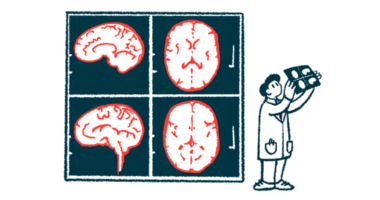Deescalating DMTs increases risk of disease activity in RRMS
Risk is greater among young adults, those currently having inflammatory activity

People with multiple sclerosis (MS) who switch from a high- to a moderate-efficacy disease-modifying therapy (DMT) increase their risk of disease activity, especially younger adults and those having inflammatory disease activity before a switch, a study finds.
Knowing these factors “can help guide future studies on deescalation,” researchers wrote in “De-Escalation of Disease-Modifying Therapy in Multiple Sclerosis-A Danish Nationwide Cohort Study,” which was published in the European Journal of Neurology.
The treatment approach for MS has changed in recent years with the introduction of several new DMTs. In the past, patients often started with a relatively safer, moderately effective therapy and then switched to a more effective one as the disease progressed or new disease activity emerged, an approach called an escalation treatment strategy.
In recent years, however, evidence has shown that starting with a high-efficacy DMT early in the disease course is better at preventing long-term disability progression. This has led to an increased use of these therapies as first-line options.
But highly effective therapies come with a greater risk of side effects and safety issues, and they are believed to become less effective with age, as the inflammatory activity of MS tends to decrease over time. It’s not clear, however, if it’s safe to switch to a less effective drug, a strategy known as deescalation.
Risks in switching from high- to moderate-efficacy DMT
Here, researchers in Denmark examined data from the Danish Multiple Sclerosis Registry and identified 333 people with relapsing-remitting MS (RRMS) who switched from a high-efficacy to a moderate-efficacy DMT between October 2007 and July 2023.
Based on the Danish Medicines Council’s definitions, high-efficacy DMTs include CD20 inhibitors such as Ocrevus (ocrelizumab), S1P inhibitors such as Gilenya (fingolimod), Tysabri (natalizumab), Lemtrada (alemtuzumab), and Mavenclad (cladribine). Moderate-efficacy drugs include interferon-based medications, Aubagio (teriflunomide), glatiramer acetate (sold as Copaxone, among others), and Tecfidera (dimethyl fumarate).
Patients most commonly switched from Tysabri (43.8%) or Gilenya (42%), and Tecfidera was what most patients (47.5%) switched to.
The main reasons for discontinuing a high-efficacy DMT were side effects, positivity for the John Cunningham (JC) virus, which can result in a life-threatening condition called progressive multifocal leukoencephalopathy, and developing antibodies against the drug.
After two years of deescalating, the findings showed that a large proportion of patients had disease activity, either as relapses, new or enlarging lesions, or lesions with active inflammation.
In the whole group, the risk of a relapse over those years was 38% and the risk for any form of disease activity was 53%. The risk of relapses and disease activity was particularly higher in younger patients and in those who’d seen disease activity in the last six months of high-efficacy treatment.
“Younger age and disease activity before deescalation were associated with an increased risk of inflammatory disease activity after deescalation,” wrote the researchers, who noted that “deescalation was not sufficient to ensure disease stability.”
“However, deescalation from other [high-efficacy] DMTs and in older patients with stable disease should be further explored,” they wrote.






